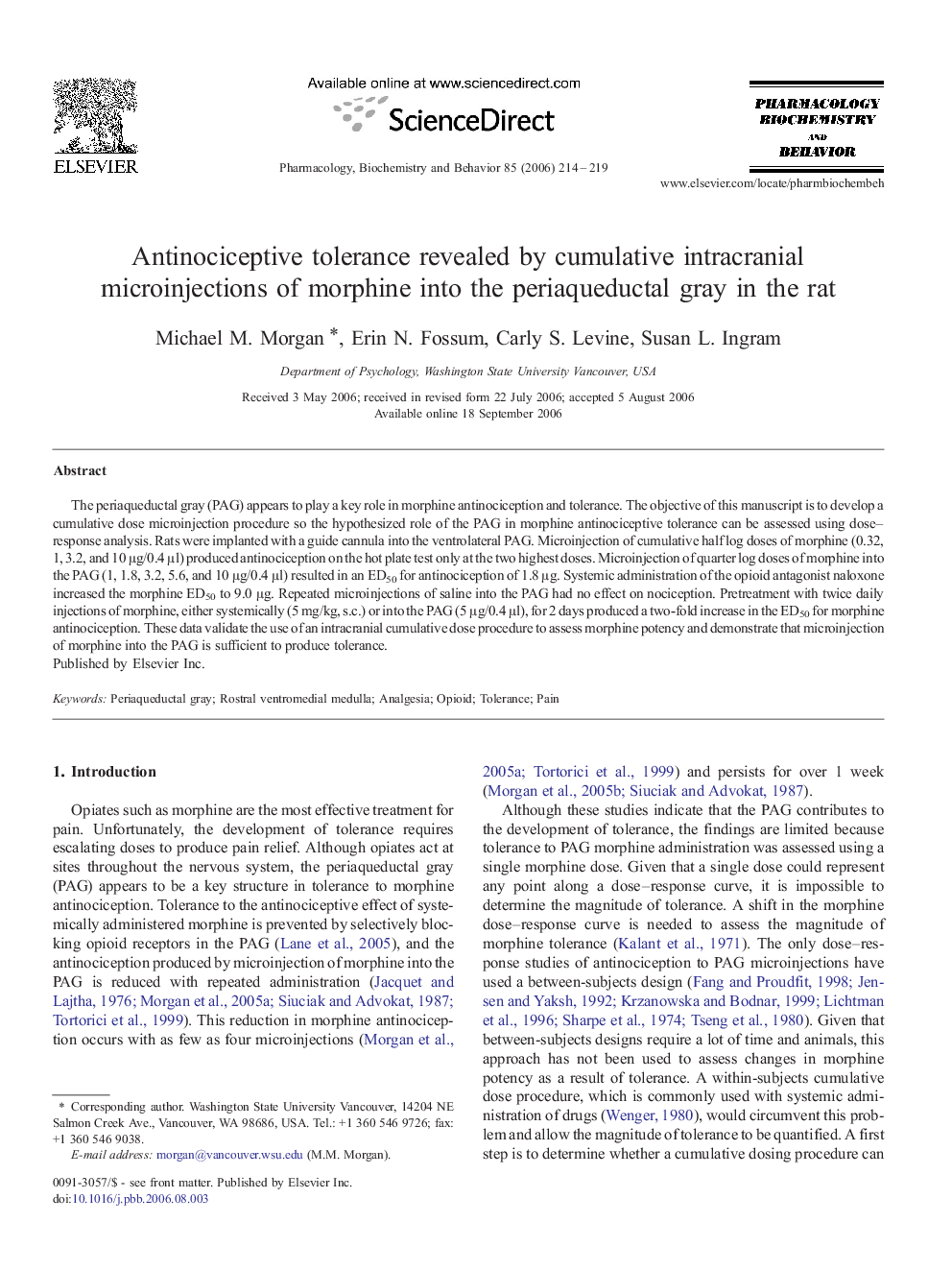| Article ID | Journal | Published Year | Pages | File Type |
|---|---|---|---|---|
| 2014504 | Pharmacology Biochemistry and Behavior | 2006 | 6 Pages |
The periaqueductal gray (PAG) appears to play a key role in morphine antinociception and tolerance. The objective of this manuscript is to develop a cumulative dose microinjection procedure so the hypothesized role of the PAG in morphine antinociceptive tolerance can be assessed using dose–response analysis. Rats were implanted with a guide cannula into the ventrolateral PAG. Microinjection of cumulative half log doses of morphine (0.32, 1, 3.2, and 10 μg/0.4 μl) produced antinociception on the hot plate test only at the two highest doses. Microinjection of quarter log doses of morphine into the PAG (1, 1.8, 3.2, 5.6, and 10 μg/0.4 μl) resulted in an ED50 for antinociception of 1.8 μg. Systemic administration of the opioid antagonist naloxone increased the morphine ED50 to 9.0 μg. Repeated microinjections of saline into the PAG had no effect on nociception. Pretreatment with twice daily injections of morphine, either systemically (5 mg/kg, s.c.) or into the PAG (5 μg/0.4 μl), for 2 days produced a two-fold increase in the ED50 for morphine antinociception. These data validate the use of an intracranial cumulative dose procedure to assess morphine potency and demonstrate that microinjection of morphine into the PAG is sufficient to produce tolerance.
